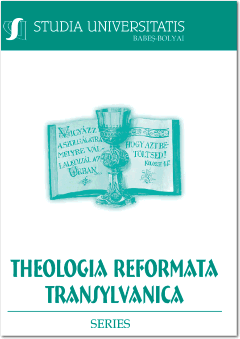AZ EMBER ISTENKÉPŰSÉGE, MINT LÉTANALÓGIA
THE IMAGO DEI AS AN INTERPRETATION OF THE ANALOGY OF BEING
Author(s): Csaba TódorSubject(s): Systematic Theology
Published by: Studia Universitatis Babes-Bolyai
Keywords: ecclesiology; relational theology; individuality; contextuality; God’s immanence- transcendence;
Summary/Abstract: Regular theological examination of human nature seems to be the exploding germ of a longer reflection and analysis. My expectations of this study, and hopefully also of the following ones, is that the crisis and uncertainty into which our churches have drifted can (and should) be the subject of theological inquiry. If we keep our study in the right trajectory, then, hopefully, a new light will be shed on the practical aspects of our church life as well.We need to show the world that the God we believe in has remained an active and immanent force in human lives and that there is a reason for a pure, diverse, and substantial unity of the world and existence. This monotheism, however, must be polar, in which the Father, the Son, and the Holy Spirit have their place as elements of analogy in the interaction of which the beauty and efficiency of service can be renewed and given a new meaning.This analysis implies a simultaneous two-way approach. On the one hand, it should be a God-centred approach that simultaneously embraces the realities of the horizontal world, and, on the other hand, in the vertical-horizontal pattern, it leaves room for a contemporary interpretation of the concept of analogia entis. I am aware that there has been an attempt to do this in the twentieth century. The reference to the dialogue between Karl Barth and Urs von Balthasar could serve as a good example of a fruitful conversation for the benefit of our spiritual and institutional lives. Together with Barth, the other “dialectical” theologian hoped and opened their dialogue in the hope of a “true rebirth of Protestantism”. The dialogues of the last century therefore must be the driving force behind the dialogues of today.
Journal: Studia Universitatis Babeș - Bolyai Theologia Reformata Transylvanica
- Issue Year: 66/2021
- Issue No: 1
- Page Range: 97-112
- Page Count: 16
- Language: Hungarian

